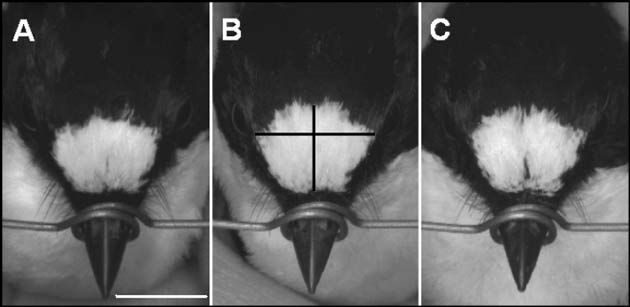Sexy Birds More Immune to Avian Flu

An animal's attractiveness to potential mates is thought in some cases to be related to the animals overall health and therefore suitability as a parent.
In few cases is health so clearly displayed as the white spot on the flycatcher's forehead.
The size of the spot on a male flycatcher bird indicates his immune system's ability to fight off the avian flu virus, scientists announced today.
The study found the male collared flycatcher can change the size of its forehead spot during mating season. Males that unfurl their forehead spots most are those that produce the most antibodies.
"It seems that the female uses the forehead spot as a health indicator," Mans Andersson of Uppsala University in Sweden. "When she chooses males with a large forehead spots, she takes not only the healthiest males but also the ones with the best immune defense against future virus infections."
The birds are not magically transforming their spots. Instead, evolution is at work, allowing the birds to show off their health. The finding supports the theory that expression of secondary sexual traits, such as brighter plumage, bigger horns or a larger spot, signals traits that are beneficial for survival.
The finding is detailed in the journal Acta Zoologica.
Sign up for the Live Science daily newsletter now
Get the world’s most fascinating discoveries delivered straight to your inbox.
The Avian Flu Spread
- Bird Flu Jumps to Cat in Germany
- New Bird Flu Concerns Italy, France, Egypt, India
- Tests Find Bird Flu in Egypt, France
- Bird Flu Reaches Western Europe
- Avian Flu Reaches Africa
U.S. Worries
- Bird Migration Has U.S. Experts Watching For Flu
- U.S. Not Prepared for Flu Pandemic
- Deadly Flu Will Reach U.S., Says Bird Migration Expert
- Bird Flu Pandemic Imminent, Health Official Says
- Avian Flu Could Reach U.S. Next Year
Flu Science
- SPECIAL REPORT: FLU FEARS
- Possible Path to Humans for Avian Flu Found
- Insides of Flu Virus Revealed
- Amid Avian Flu Fears, Other Bugs Far More Deadly
- Trojan Ducks: One More Possible Flu Carrier
- Scientists Recreate 1918 Flu Virus From Scratch
SPECIAL REPORT: FLU FEARS
What it is and how it affects us.
How to prevent and treat the flu.
How flu could become a global killer.












